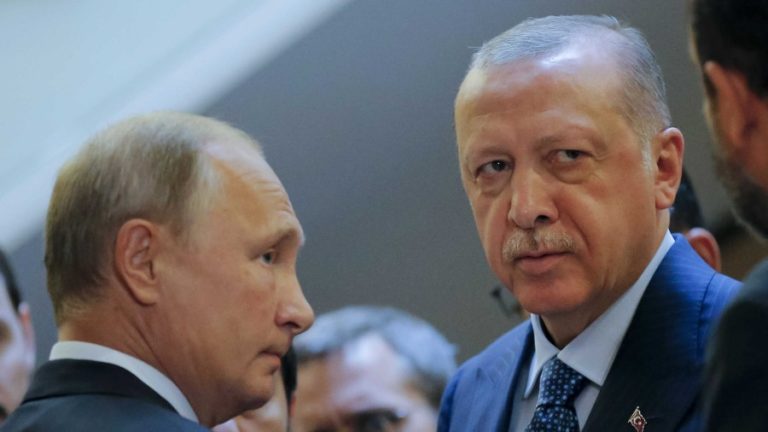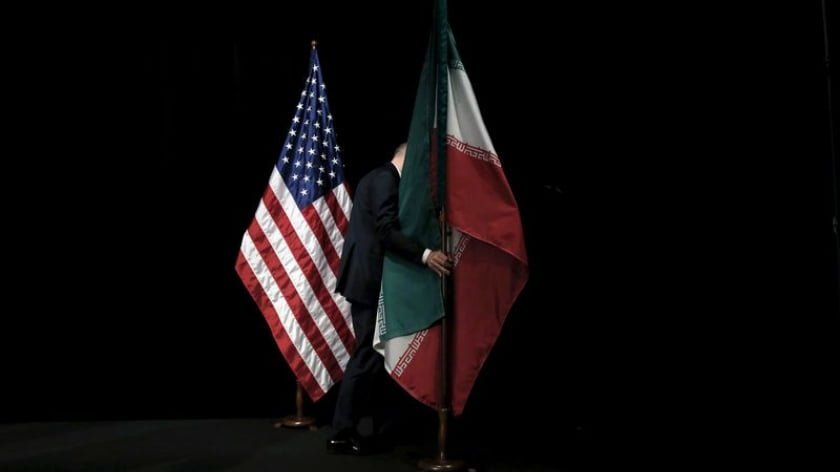On the Ministerial Meeting for Participants in the “Quad”
The meeting on October 6th between the foreign ministers for countries participating in the so-called “Quadrilateral” (the Quad), which is composed of the USA, Japan, India, and Australia, is one of the most noteworthy events on the world political stage in recent times. New Eastern Outlook has addressed the topic how the idea itself originated for the Quad (in the beginning of 2000s) on a fairly regular basis, and its lengthy, convoluted, and extremely difficult development path.
In this respect, the Tokyo meeting can be seen as an important sign of the start of large “crystals” forming in the chaotic “soup” that the picture depicting the world’s political space gradually melted into after the Cold War ended.
The motivation for the process of “crystallization”, generally speaking, the same one, and lies in the fact that two poles for political, economic, and military power are taking shape. Out of those, one (the US) is a holdover from the prior standoff, and now the PRC is the candidate for the role played by the USSR during the Cold War. Both the USA and the PRC will fulfill the role of those “centers of mass” in whose gravitational field many other, significantly less weighty, players will wind up.
The abbreviation FOIP (Free and Open Indo-Pacific) occupied almost the central spot in the vocabulary used by those that participated in the event in Tokyo. Over the past few years, concern about “freedom and openness” in the maritime areas in the Indo-Pacific (and “it is clear who threatens that”) has been expressed, either directly or indirectly, on any occasion that is more or less appropriate, as well as at various regional events. However, now the abbreviation FOIP – and what that spells out – will seemingly become a kind of “credo” for the Quad that they will be obliged to implement collectively.
Only one participant in the Tokyo meeting spoke out openly and attacked the PRC because it threatened an FOIP, namely, US Secretary of State Mike Pompeo, who is now the world’s leading Sinophobe (how did the Chinese fail to please this man who looks quite good-natured, as all chubby men are supposed to look?). In particular, one thesis was put forth about the need to confront China along practically its entire perimeter, including both its maritime and land borders.
Three other ministers, as well as Prime Minister Yoshihide Suga, who started the event, used language with allegories when they tried to define what the topic itself was, as well as the possible sources of threats to an FOIP.
In this regard, it is impossible not to agree with comeback in the Mainichi Shimbun that, despite the general concerns that the countries more or less share about the factor of China transforming into a global power, each of the Quad members demonstrates its own important features in relations with the country. And the leading newspapers in each of them commented on the Tokyo meeting in their own particular way.
But most comments invariably contained the symbolic word “formalization”. That was first heard on August 31st this year, during a scheduled meeting as part of the US-India Strategic Partnership Forum. In response to the host’s request to clarify the substantive content of this term, US Deputy Secretary of State Stephen Biegun noted the absence of “any institution like NATO and the European Union” in the region, which should be created not only to counter the “threat of China”, but also to form a “positive agenda.” The assertion about the need to expand the countries that make up this future organization, “as happened with NATO after it was formed in 1949,” also resounded quite clearly.
This means that the word “formalization” takes the issue of converting what is effectively a group in the bounds of a forum (with a number of members today that can barely be counted) into a full-fledged military-political alliance and puts it on the world political agenda; this threatens to bring about radical changes in the overall picture for both regional and world politics.
However, some circumstances, including the differences mentioned above that come out in the rhetoric from the event’s participants, suggest that there is a less than one hundred percent probability (and perhaps much less) of bringing the process of “formalizing” the Quad into a binding military and political alliance. Out of these, the main one can be seen in the fundamental difference in what characterizes the relations between the two new global opponents when compared to what was observed during the Cold War.
This difference lies in the economics governing US-China relations, which is – and not without good reason – defined as “interdependence.” US-Soviet relations were not even close to that.
We have previously reported on how the US-China connection does encompass trends that run in the very opposite direction. This means the spheres involved in politics and the economy. American experts are increasingly expressing doubts about whether attempts (made by the same Mike Pompeo) to integrate the latter into the course of the former in the bounds of the concept of “economically decoupling” Washington from Beijing are productive – or even technically viable.
It is hardly possible for the mechanism of economic “interdependence” to continue to successfully functioning when one of the partners plans to put a gun to the other’s head. It is definitely clear that these intentions will not receive support in the American business community.
In regard to India, it can be confidently affirmed that the incident in Ladakh, which is still not resolved, has greatly contributed to prompting India to occupy a much clearer position vis-a-vis participating in the Quad compared to the end of last year. However, the author does not bar the possibility of another point of view that holds that the incident itself was, to a great extent, a consequence of India’s long-standing course towards rapprochement with each of the other three Quad participants.
But in this case we can also make reference to the factor of Sino-Indian economic cooperation, which is very large in scope. And this despite the fact that India runs an annual trade deficit of over 50 billion dollars with China. However, China is not “to blame” for this by any means, but rather the state of the Indian economy. What also raises doubts is whether the Indian leadership’s intention to do something similar to the American “economic decoupling” from China mentioned above would be productive or feasible in the bounds of the strategy, declared by Prime Minister Narendra Modi, of achieving far-reaching “autonomy”.
Another “Ladakh” (and again, what can be called “on time” in a strange way) happened right before the Tokyo meeting in Japanese-Chinese relations, and the phrase “already complicated, but far from hopeless” is suitable to describe that. A certain negativity welled up in them when, in early September on the Internet, a Chinese “electronic museum” was launched that is dedicated to the issue ownership of the five uninhabited Diaoyu Islands. Japan calls these the Senaku Islands, and in reality controls them. Certain “misunderstandings” periodically arise between coast guards from both countries in the waters adjacent to the islands, but fortunately so far there have not been any consequences on the scale of “Ladakh”.
The opening of this “museum” took place a week after a telephone conversation between Chinese leader Xi Jinping and Japanese Prime Minister Yoshihide Suga, which could be seen as the beginning of establishing relations between PRC’s leadership and the new Japanese government.
In this regard, it is worth taking note of the contradictory nature inherent in Japan’s “new-old” leadership. On one hand, Nobuo Kishi, who is the younger brother of former Prime Minister Shinzo Abe, took the post of Defense Minister, and this was supposed to symbolize consistency for the country’s political course. However, on previous occasions Nobuo Kishi has shown a “special penchant” for Taiwan and the island’s leadership. China has been paying attention to this with apprehension.
At the same time, Japan notes that the role of the “gray cardinal” (“shogun”) in the country’s ruling establishment has been bolstered, which is represented by the current Secretary General of the Liberal Democratic Party, Toshihiro Nikai. The latter is attributed to “pro-Chinese sentiments.”
Finally, the upcoming general parliamentary elections, which will be held in a year, are becoming an important factor in Japan’s domestic political life. That is, if Yoshihide Suga does not dissolve the current parliament ahead of schedule, which his predecessor Shinzo Abe planned on doing more than once. Meanwhile, on the “left-center” side of the Japanese party scale, a quite worthy competitor in the form of the LDP has appeared, which is headed by the experienced politician Yukio Edano, who has his own views on what course to adopt towards China.
As far as Australia goes, the anti-Chinese trend running through the current conservative leadership is translating into more and more significant costs for the country’s economy. Therefore, it is doubtful that the political and economic masochism expressed by Scott Morrison’s government will develop significantly any further. Moreover, in Australia general parliamentary elections are on the horizon, and will take place six months after the elections in Japan.
In general, the prospects for the Quad to “formalize” to a substantial degree are extremely doubtful. At least that is the case over the short term. Unless, of course, some kind of “force majeure” arises in China’s relations with its neighbors that is much larger than the incident in Ladakh, and compared to which opening the “electronic museum” is a completely minor incident.
But, of course, China could not watch the event held in Tokyo by the participants in the Quad project without leaving some caustic comments.







